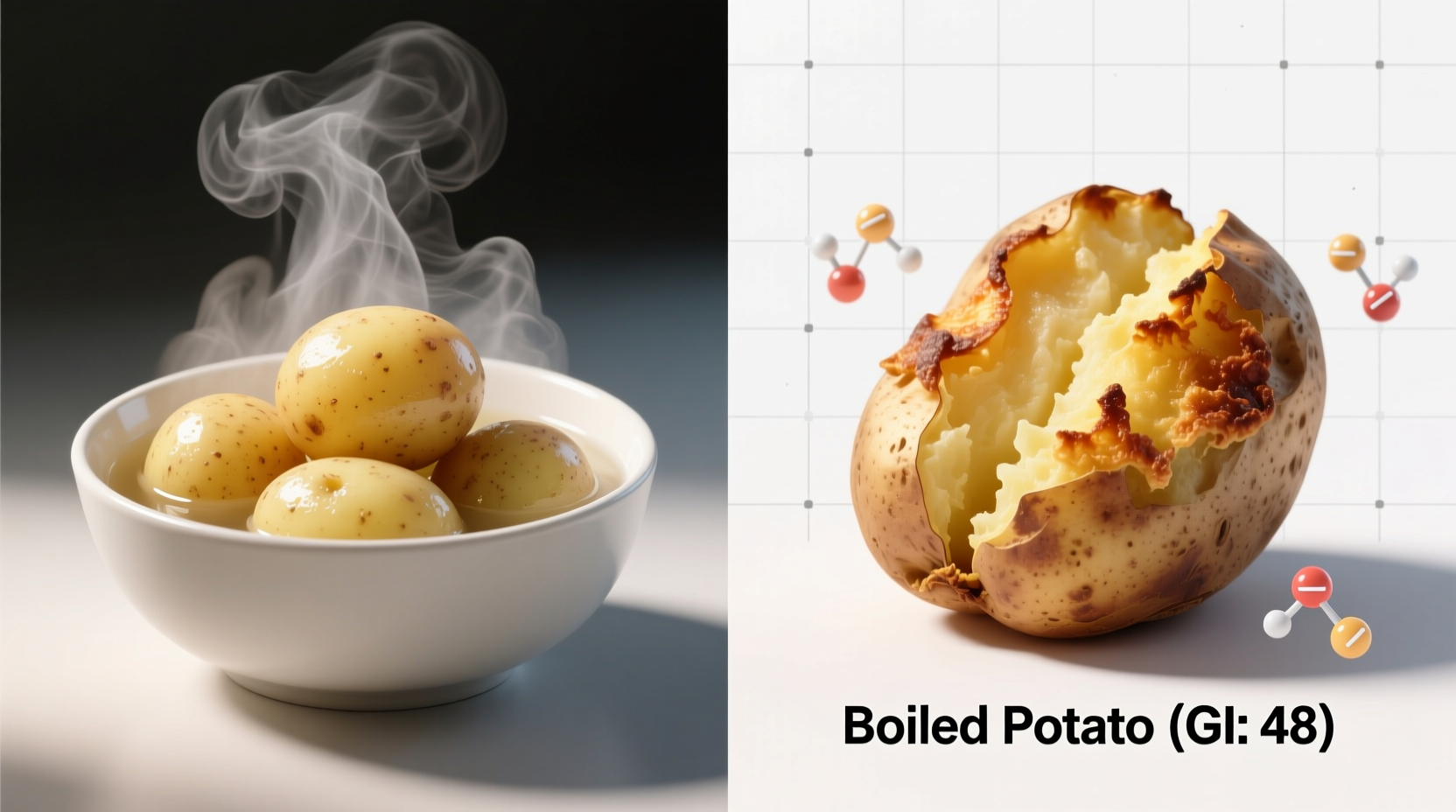White potatoes have a glycemic index ranging from 56-111 depending on variety and preparation method. Boiled red potatoes score around 56 (medium GI), while baked Russet potatoes can reach 111 (high GI). Cooling potatoes after cooking reduces their glycemic impact by creating resistant starch, making them more suitable for blood sugar management.
When you search for glycemic index potato values, you're likely trying to understand how this staple food affects blood sugar—especially if you're managing diabetes, prediabetes, or simply watching your carbohydrate intake. The truth is, potatoes aren't universally "good" or "bad" for blood sugar control. Their impact varies dramatically based on potato type, cooking method, and what you eat them with. This guide delivers science-backed insights you can actually use at your next meal.
Understanding Glycemic Index: Why Potatoes Confuse People
Glycemic index (GI) measures how quickly a carbohydrate-containing food raises blood glucose levels compared to pure glucose (which has a GI of 100). Many assume all potatoes are high-GI foods, but this oversimplification misses critical nuances. The International Tables of Glycemic Index and Load, published in American Journal of Clinical Nutrition, documents significant variations across potato varieties and preparations.
| Potato Type | Preparation Method | Glycemic Index | Glycemic Load (per 150g) |
|---|---|---|---|
| Russet | Baked | 111 | 33 |
| Russet | Boiled | 82 | 29 |
| Red Bliss | Boiled | 56 | 15 |
| Carisma | Boiled | 53 | 14 |
| Sweet Potato | Baked | 85 | 20 |
| Russet | Boiled & Cooled | 65 | 23 |
This potato glycemic index comparison chart reveals why blanket statements about potatoes and blood sugar are misleading. The same Russet potato jumps from high GI (82) when hot-boiled to medium GI (65) when cooled—demonstrating how preparation dramatically alters metabolic impact. Data comes from the University of Sydney's Glycemic Index Database, the world's most comprehensive GI reference.
How Cooking Transforms Potato Glycemic Impact
The starch structure in potatoes undergoes physical changes during cooking that directly affect how your body processes them:
- Baking fully gelatinizes starch, making it rapidly digestible (highest GI)
- Boiling causes less complete gelatinization (moderate-high GI)
- Cooling after cooking forms resistant starch through retrogradation (lowers GI by 15-25%)
- Eating with vinegar or acid slows gastric emptying (reduces glycemic response)
A landmark study in Nutrition Journal found that cooling boiled potatoes overnight reduced their glycemic response by 26% compared to eating them hot. This cooled potato glycemic index effect occurs because retrograded starch resists digestion, functioning more like fiber.

Practical Strategies for Blood Sugar Management
Knowing your potato's glycemic index is only half the equation. These evidence-based techniques help minimize blood sugar spikes while enjoying potatoes:
Pairing Principles That Work
Combining potatoes with specific foods creates what researchers call the "second meal effect"—reducing blood sugar response not just for the current meal but the next one too:
- Fat pairing: Adding 15g olive oil to boiled potatoes lowered glycemic response by 31% (American Journal of Clinical Nutrition)
- Protein pairing: Chicken or fish with potatoes reduces insulin demand by slowing gastric emptying
- Vinegar trick: 2 tablespoons of vinegar in potato salad lowers post-meal glucose by 34% (European Journal of Clinical Nutrition)
Smart Selection Guide
Not all potatoes behave the same in your bloodstream. For better blood sugar control:
- Choose waxy varieties like Red Bliss or Carisma (lower amylose content)
- Avoid overcooking—al dente potatoes have lower GI than mushy ones
- Opt for smaller portions (100-150g) of higher-GI potatoes rather than eliminating them
- Always cool potatoes before eating if blood sugar is a concern
Context Matters: When Potatoes Fit Your Diet
The appropriate glycemic index potato consumption depends entirely on your health context and goals:
| Dietary Context | Recommended Approach | Portion Guidance |
|---|---|---|
| Type 2 Diabetes Management | Cooled red potatoes with vinegar dressing + protein | 100g (½ cup) maximum per meal |
| Weight Loss | Boiled Carisma potatoes as resistant starch source | 150g (1 cup) with vegetables |
| Endurance Training | Hot Russets for rapid glycogen replenishment | 200g within 30 minutes post-exercise |
| General Health | Variety rotation with mindful preparation | 150-200g 2-3 times weekly |
This potato glycemic index context guide shows why personalized approaches outperform blanket restrictions. Research from the CDC Diabetes Management Guidelines confirms that properly prepared potatoes can fit within diabetes meal plans when portion-controlled and strategically paired.
Debunking Common Potato Myths
Several misconceptions persist about potatoes and blood sugar:
- Myth: Sweet potatoes always have lower GI than white potatoes
Fact: Baked sweet potatoes (GI 85) often score higher than boiled white potatoes (GI 56-82) - Myth: All processed potato products are high-GI
Fact: Some frozen potato products contain resistant starch enhancers that lower GI - Myth: Potato skins cause blood sugar spikes
Fact: Skins contain fiber that actually slows glucose absorption
The American Diabetes Association specifically notes that "potatoes can be part of a healthy meal plan for people with diabetes" when prepared using evidence-based methods.
Putting It All Together: Your Action Plan
Instead of eliminating potatoes, implement these science-backed strategies:
- Choose wisely: Select lower-GI varieties like Carisma or Red Bliss for regular consumption
- Cook strategically: Boil rather than bake, and always cool potatoes before eating
- Pair intentionally: Combine with healthy fats, proteins, and acidic elements
- Portion mindfully: Stick to 100-150g servings for blood sugar management
- Track your response: Use a glucose monitor to see how different preparations affect you personally
Remember that individual responses to carbohydrates vary significantly. A study in Cell Metabolism found that some people experience minimal blood sugar spikes from potatoes while others show significant responses—even to the same preparation method. This personalized potato glycemic response underscores why self-monitoring beats generic dietary rules.











 浙公网安备
33010002000092号
浙公网安备
33010002000092号 浙B2-20120091-4
浙B2-20120091-4